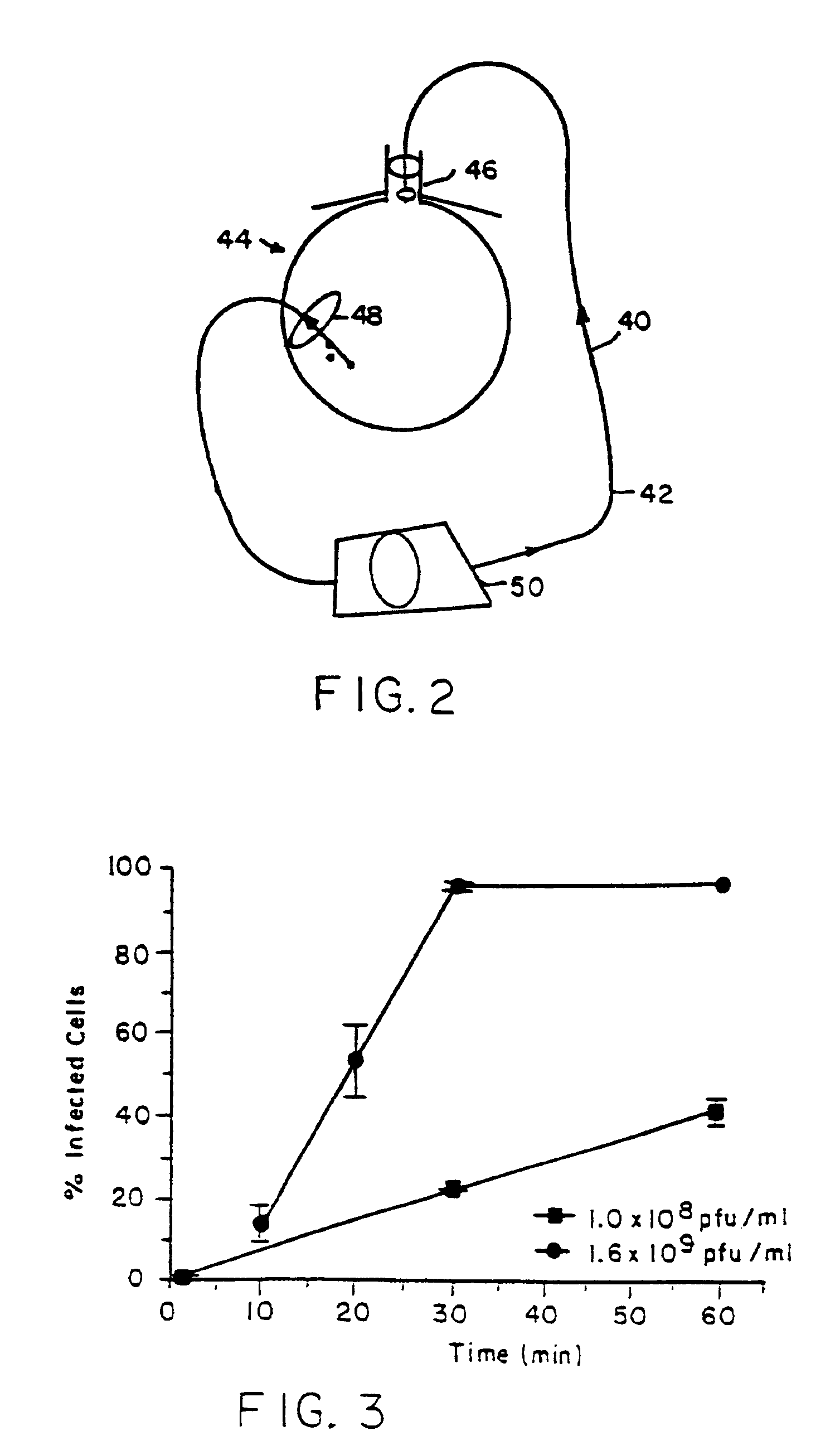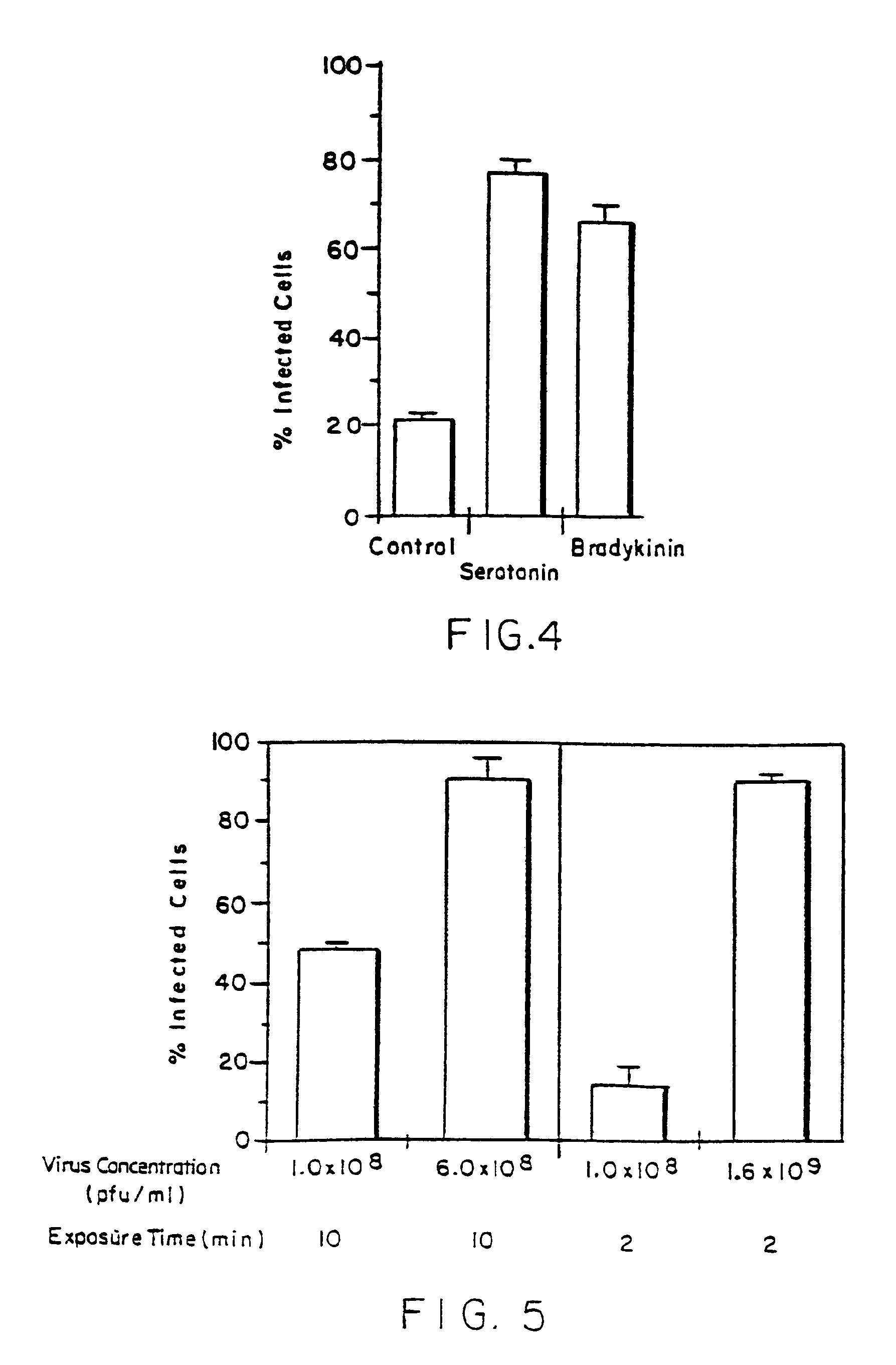Gene delivery compositions and methods
- Summary
- Abstract
- Description
- Claims
- Application Information
AI Technical Summary
Benefits of technology
Problems solved by technology
Method used
Image
Examples
example 1
Separate Use of Permeability Agents and Low Calcium Concentration Conditions
Acutely explanted rabbit heart (New Zealand White; 2-3 kg total body weight) were employed for gene transfer tests of this Example 1 and the following Example 2. The rabbits received heparin anticoagulation (1000 units IV) prior to pentobarbital (50 mg / kg IV). Each heart was extracted and rinsed twice in ice-cold, modified Krebs buffer containing 138.2 mM Na+, 5.4 mM K+, 1.2 mM Mg2+, 1.0 mM Ca2+, 144.4 mM Cl−, 1.2 mM SO42−, 1.2 mM H2PO4−, 20 mM HEPES, and 15 mM glucose, saturated with O2 at pH 7.4. Next, the aorta was cannulated, and the heart was suspended in an insulated chamber at 35-37° C.
Langendorff perfusion occurred by retrograde flow from the cannula in the ascending aorta to the coronary arteries. Each heart was first perfused with 20 ml Krebs buffer at approximately 30 ml / min. After initial perfusion, the heart was pretreated with one of the following: (1) 90 ml of 50 μM calcium-Krebs over 3 minute...
example 2
Combined Use of Permeability Agent and Low Calcium Concentration Conditions
The serotonin and low calcium protocols as described in Example 1 above were combined. Pretreatment was accomplished with 500 ml of normal Krebs buffer containing 10−5 M of serotonin over 15 minutes followed by 90 Mlles of the same reduced calcium (50 μM) concentration solution over 3 minutes. Those same serotonin and low calcium concentration solutions were used during delivery of the Adβμgal vector. Results are set forth below and in FIG. 5 of the drawings. Those results and the results of Example 1 above indicate a synergistic increase in gene transfer efficiency resulting from the combined use of a permeability agent and low calcium concentration conditions in accordance with the invention. Virus concentration was also varied to increase gene transfer efficiency. Specifically, using a virus concentration of 1.0×108 pfu / ml, infection occurred in 49.4±1.0% of cells after 10 minute virus exposure and 16.3±3....
PUM
| Property | Measurement | Unit |
|---|---|---|
| Molar density | aaaaa | aaaaa |
| Molar density | aaaaa | aaaaa |
| Mass | aaaaa | aaaaa |
Abstract
Description
Claims
Application Information
 Login to View More
Login to View More - R&D
- Intellectual Property
- Life Sciences
- Materials
- Tech Scout
- Unparalleled Data Quality
- Higher Quality Content
- 60% Fewer Hallucinations
Browse by: Latest US Patents, China's latest patents, Technical Efficacy Thesaurus, Application Domain, Technology Topic, Popular Technical Reports.
© 2025 PatSnap. All rights reserved.Legal|Privacy policy|Modern Slavery Act Transparency Statement|Sitemap|About US| Contact US: help@patsnap.com



